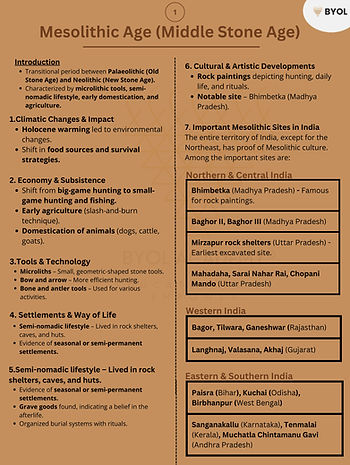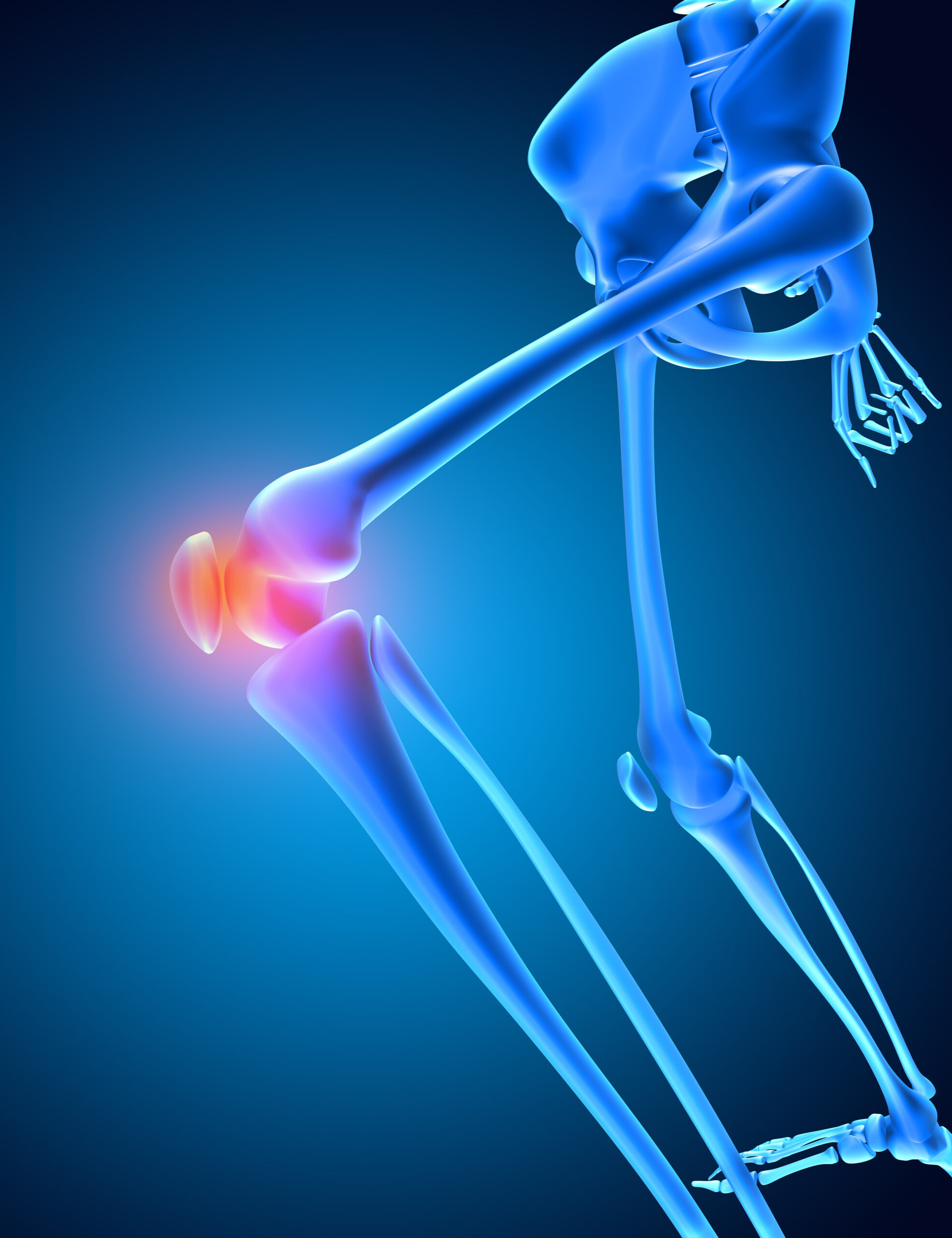Introduction
The Mesolithic Age, sometimes referred to as the Middle Stone Age, is an important period of transition between the Neolithic (New Stone Age) and Paleolithic (Old Stone Age) periods. Large-scale cultural, technological, and climatic changes occurred during this period, which roughly took place 10,000–8,000 BCE. In this age, India saw the Mesolithic era, which saw the development of microlithic tools, semi-permanent communities, and the early domestication of plants and animals.
Key Aspects
| Climatic Changes & Impact | Holocene warming led to environmental shifts, influencing food sources. |
| Economy & Subsistence | Shift from big-game hunting to small-game hunting, fishing, and early agriculture.Domestication of animals began. |
| Tools & Technology | Microliths (small stone tools), bow & arrow, bone & antler tools. |
| Settlements & Way of Life | Semi-nomadic, lived in rock shelters, caves, & huts. |
| Burial Practices & Beliefs | Graves contained goods, indicating belief in the afterlife. |
| Social Evolution, Pastoral & Horticultural Societies | Early pastoralism & slash-and-burn agriculture. |
| Cultural & Artistic Developments | Rock paintings depicting daily life, dance, and rituals. |
Mesolithic Sites in India
The entire territory of India, except for the Northeast, has proof of Mesolithic culture. Among the important sites are:
Northern & Central India
| Bhimbetka (Madhya Pradesh) – Famous for rock paintings. |
| Baghor II, Baghor III (Madhya Pradesh) |
| Mirzapur rock shelters (Uttar Pradesh) – Earliest excavated site. |
| Mahadaha, Sarai Nahar Rai, Chopani Mando (Uttar Pradesh) |
Western India
| Bagor, Tilwara, Ganeshwar (Rajasthan) |
| Langhnaj, Valasana, Akhaj (Gujarat) |
Eastern & Southern India
| Paisra (Bihar), Kuchai (Odisha), Birbhanpur (West Bengal) |
| Sanganakallu (Karnataka), Tenmalai (Kerala), Muchatla Chintamanu Gavi (Andhra Pradesh) |
Key Characteristics of Mesolithic Age
- Beginning of Microlithic Tools: Tiny, specialized stone tools with a geometric shape.
- Temporary Cities: Showing signs of hut-like constructions, these settlements mark the shift from nomadic to semi-sedentary lifestyles.
- Various Survival Techniques: Early plant cultivation, fishing, and small-game hunting replaced big-game hunting.
- Prehistoric Agriculture: The earliest attempts to tame animals, such as dogs, and the use of crude farming methods.
- Cave Paintings: Many cave paintings depict everyday life and religious ideas.
- Spiritual principles and funeral customs: Well-organized funeral systems with grave goods suggest a growing spiritual consciousness.
- Historical Transitions to Livestock & Agriculture: The earliest indications of small-scale farming and animal herding before full-fledged agriculture.
A transitional era, the Mesolithic Age connected the settled farming lifestyle of the Neolithic with the hunter-gatherer way of life of the Paleolithic. It established the groundwork for community living, agriculture, and animal domestication—all of which influenced the development of human civilisation in the future. This period of human prehistory is important because of the adaptations that were made during this time, which were essential to the development of settled civilisations.





